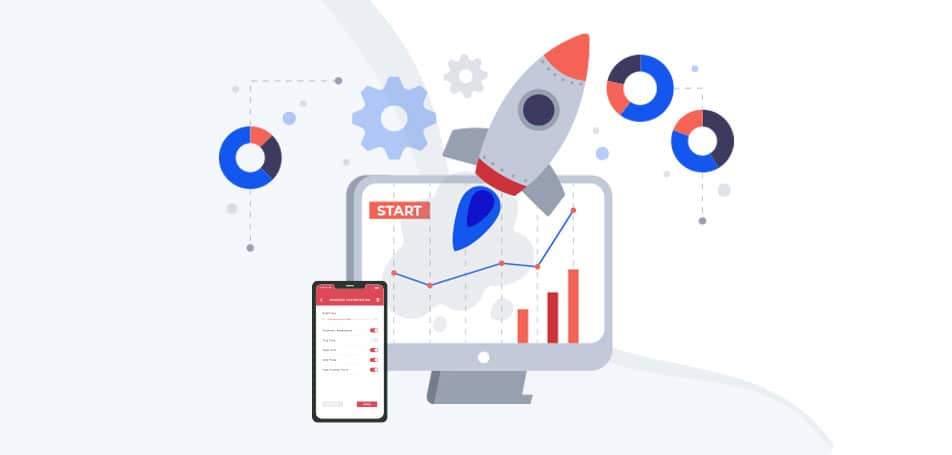
Content is king in today’s fast-paced digital landscape, but content distribution channels are undoubtedly its queen.
For B2B eCommerce businesses, merely creating high-quality content isn’t enough; leveraging the right content distribution channels is crucial to ensure your content reaches its target audience and drives sales.
In this comprehensive guide, we’re diving into 25 powerful Content distribution channels distribution channels designed to supercharge your B2B eCommerce sales.
Whether you want to improve your SEO, engage more effectively on social media, or explore cutting-edge platforms, we’ve got you covered.
From traditional methods like email marketing to the latest in AI-driven analytics tools, we’ll give you the strategies you need to optimize your reach and turn content into revenue. Make every piece of content count—learn how to distribute smarter, not harder.
Why Are Content Distribution Channels Important For B2B E-Commerce Sales?

Content distribution channels is crucial for B2B e-commerce sales for several reasons. First, it establishes thought leadership and credibility. High-quality, informative content demonstrates expertise, which is essential for gaining the trust of other businesses.
Second, Content distribution channels supports SEO efforts, making it easier for potential clients to discover you online. Good content with relevant keywords will rank higher in search engines, increasing web traffic. Third, it aids in customer education.
B2B buying cycles are often lengthy and complex, requiring a deep understanding of the products or services in question; content helps guide potential clients through this process. Fourth, it provides value beyond the sale, fostering long-term relationships.
Well-crafted content addresses customer challenges and offers solutions, making clients more likely to return for future transactions. Overall, Content distribution channels is a multipurpose tool that drives sales and builds lasting relationships.
25 Powerful Content Distribution channels
In today’s digital age, Content distribution channels is crucial for any business aiming to grow its brand, establish credibility, and drive sales.
However, creating high-quality content is just one piece of the puzzle; distributing it effectively is equally important. Here are six powerful Content distribution channels distribution channels to help your content reach the right audiences and drive meaningful engagement.
1. Video Marketing
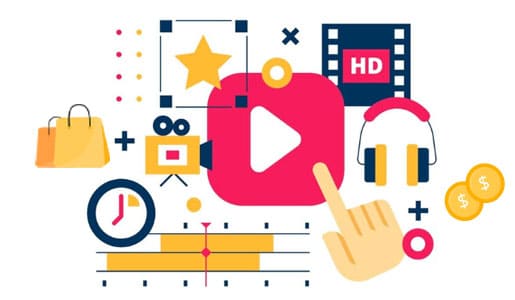
Video content has become incredibly popular and influential with the rise of platforms like YouTube, TikTok, and Instagram Reels. It’s not just for entertainment; businesses use video marketing to explain complex topics, demonstrate product features, and tell compelling stories.
Video can be easily integrated into multiple channels, like social media, websites, and email campaigns. However, the key to successful video marketing is understanding your audience’s needs and preferences and tailoring the video content accordingly.
Once produced, videos can be distributed through YouTube’s vast network, embedded in your website, or included in social media posts. Video’s visual and auditory elements can make your content more memorable and easier to understand, increasing its impact.
2. Social Media Advertising
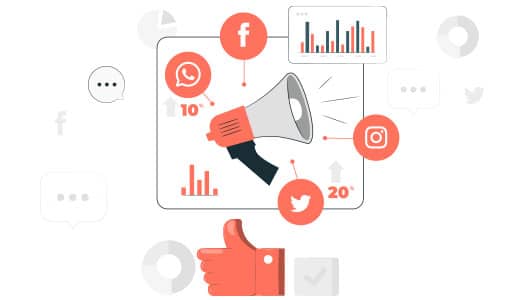
The power of social media platforms like Facebook, Instagram, Twitter, and LinkedIn is undeniable. While organic reach is valuable, social media advertising allows you to target your content to specific audiences based on age, location, interests, and more.
Paid promotions can help your content reach people who are most likely to be interested in your products or services, thus increasing the likelihood of conversions.
Moreover, analytics provided by these platforms can offer valuable insights into the performance of your content, helping you refine your strategy for the future.
3. Email Marketing

Despite being one of the oldest digital marketing channels, email remains incredibly effective for distributing content directly to interested parties.
Email marketing lets you maintain an ongoing relationship with your audience, whether you’re sending out weekly newsletters, product updates, or exclusive offers. Importantly, it’s a channel over which you have complete control, unlike social media platforms where algorithms dictate reach.
By segmenting your email list based on customer behavior or demographics, you can distribute tailored content that addresses the specific needs or interests of different groups within your audience.
Plus, the ROI on email marketing is generally relatively high, making it a cost-effective distribution channel.
4. Influencer Marketing
The rise of social media influencers has presented businesses with a novel way to distribute content. Influencers have a pre-existing, engaged audience that trusts their recommendations.
Partnering with influencers who align with your brand values can help you reach new audiences and lend credibility to your products or services.
The content created or shared by influencers often appears more authentic and less “salesy” to consumers, making it more likely to be well-received. Choose influencers carefully, ensuring their audience matches your target demographic for optimal results.
5. Content Marketing Platforms
While it may seem odd to include ‘Content distribution channels’ as a distribution channel for Content distribution channels, platforms like Medium, LinkedIn Articles, or guest blogs on reputable sites provide valuable content distribution channels.
These platforms already have large, engaged audiences looking for quality content. By publishing on these platforms, you reach a broader audience and establish thought leadership in your industry.
Of course, offering valuable, insightful content that serves the reader and subtly promotes your brand is key.
6. Search Engine Optimization (SEO)
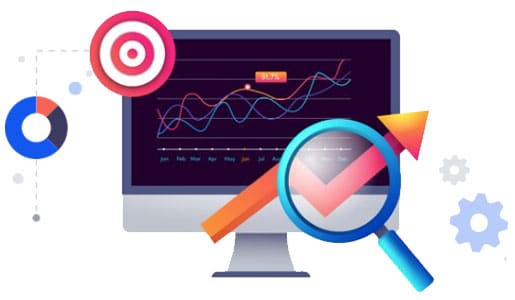
SEO isn’t just a tactic for driving traffic to your website; it’s also a powerful channel for Content distribution channels distribution channel. By optimizing your content for search engines, you increase the likelihood that it will rank well in search results for relevant keywords.
This is particularly important for evergreen content that remains relevant over time. Unlike other channels where the impact may be short-lived, well-optimized content can continue to attract new audiences for months or even years. SEO best practices like keyword research, high-quality backlinks, and user-friendly formatting can help your content gain the visibility it deserves.
7. Digital Signage
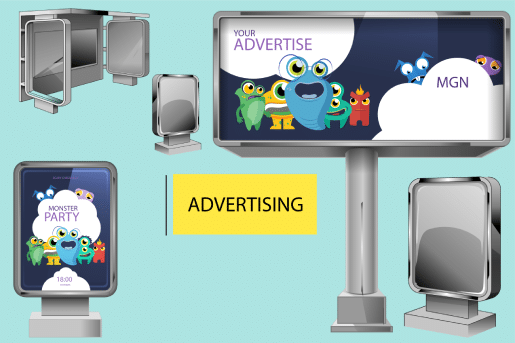
In the fast-paced digital marketing realm, businesses often overlook traditional channels like digital signage, dismissing them as outdated.
However, modern digital boards are interactive, customizable, and analytics-driven, capable of adding significant value to a B2B e-commerce strategy. For instance, strategically placed digital signs at trade shows can attract attention while showcasing real-time customer testimonials and product demos.
This captures interest and builds trust by showing real-world applications and satisfied customers. Additionally, digital signage in corporate lobbies can make a lasting impression on visiting B2B clients, showcasing your company’s key messages, performance metrics, or even live feeds from your e-commerce platform.
This multi-dimensional marketing approach establishes credibility and provides an additional touchpoint for client engagement, making digital signage an underutilized yet potent channel for boosting B2B e-commerce sales.
8. Word-of-Mouth Marketing
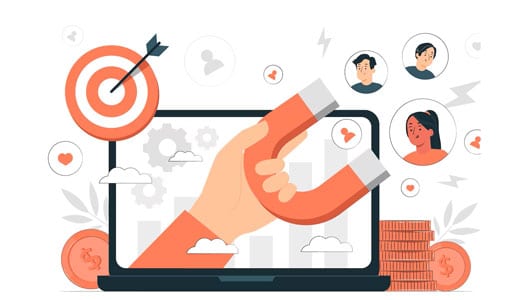
In the B2B sector, word-of-mouth marketing can be compelling, driving high-quality leads that the recommendation person has partially qualified. Referred clients typically have a higher lifetime value and lower churn rates, making this an invaluable distribution channel.
Ask satisfied customers for testimonials or to act as case studies to be featured in your marketing materials. Encourage referrals by providing excellent service and incentives for clients who refer new business to you.
9. Public Relations (PR)
PR is about managing your company’s public image, and a well-planned PR strategy can give you significant visibility in the marketplace.
You can build your brand’s reputation and authority by issuing press releases, getting featured in industry publications, or even speaking at events. In B2B, credibility is crucial, and PR activities can foster trust and influence buying decisions in your favor.
10. Offline Marketing

Don’t overlook the importance of offline marketing channels like print advertising, direct mail, or even networking at business events. For B2B companies, trade shows can be a critical component of the marketing strategy.
Here you can showcase your products and services, build relationships, and establish your brand as a leader in the industry. Offline marketing can be a helpful channel for reaching less active decision-makers online.
11. Partnership Marketing
In B2B e-commerce, partnerships can be a game-changer. Partnering with businesses that complement but don’t compete with your services can help you reach a broader but still targeted audience.
Joint webinars, co-authored white papers, and bundled services are ways to collaborate. These partnerships can dramatically extend your reach and lend your brand additional credibility.
12. Community Building
Creating a community around your brand can offer immense long-term benefits. Whether it’s an online forum, a dedicated customer portal, or even a professional association, communities can act as a constant feedback loop and a reliable source of user-generated content.
Moreover, a strong community fosters customer loyalty and can be a natural platform for upselling or cross-selling opportunities.
13. Online Marketplaces
B2B e-commerce platforms like Alibaba, Amazon Business, or industry-specific marketplaces can offer additional channels for your products and services.
While you give up some control, these platforms can offer significant reach, often to markets that are difficult to access otherwise. Plus, they bring the added advantage of built-in trust and payment infrastructure.
Creating a comprehensive Content distribution channels strategy in B2B e-commerce requires a multifaceted approach. Here are twelve additional channels that can be integrated into your overarching plan to expand your reach, build lasting relationships, and boost sales.
14. Podcasts

Podcasting has grown significantly as a medium. B2B businesses can create their own podcast focusing on industry-related topics or sponsor existing ones.
A podcast provides an intimate way to connect with your audience, establish authority, and subtly plug your products or services. Plus, sponsorship or guest appearances on popular industry podcasts can quickly extend your reach to new but relevant audiences.
15. Webinars
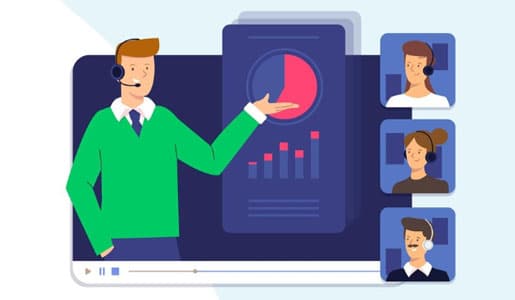
Webinars offer a platform to demonstrate thought leadership and provide value to your audience. They allow real-time interaction with potential customers, who can ask questions and get immediate responses.
They are excellent for complex topics that require detailed explanations, something often necessary in the B2B world. Webinars can be recorded for later distribution, offering ongoing value.
16. Retargeting Ads

Retargeting focuses on reaching out to people who’ve already interacted with your website or content but haven’t made a purchase.
Using cookies, you can display specific ads to these individuals, reminding them of your products or services as they browse other sites. For B2B businesses with long sales cycles, retargeting can help keep your brand top-of-mind.
17. LinkedIn Sponsored Content

LinkedIn is a critical platform for B2B marketing, and its sponsored content feature allows you to extend your reach. With its robust targeting options, you can reach professionals based on their job titles, industries, and more.
The professional environment of LinkedIn also lends itself to more in-depth, educational content, ideal for B2B marketing.
18. Account-Based Marketing (ABM)
ABM is a highly focused business strategy where a marketing team treats an individual prospect or customer like its very own market.
Through personalized marketing messages, you can create highly targeted campaigns to attract high-value companies. ABM can be incredibly effective in B2B marketing, where sales cycles can be long and involve multiple decision-makers.
19. Quora and Reddit
These platforms may not be the first that comes to mind for B2B marketing, but they offer valuable communities. By answering questions and engaging in discussions related to your industry, you can establish your brand as an expert.
Just be sure your participation is valuable and isn’t overtly promotional, as these communities often frown upon obvious marketing tactics.
20. SMS Marketing

While SMS marketing might seem dated, it has applications in the B2B space. With an open rate of 98%, SMS can be an excellent channel for time-sensitive offers or urgent updates, provided you have obtained explicit permission to text your contacts.
This channel can also support other initiatives by driving traffic to webinars, product launches, or valuable resources.
21. Affiliate Marketing
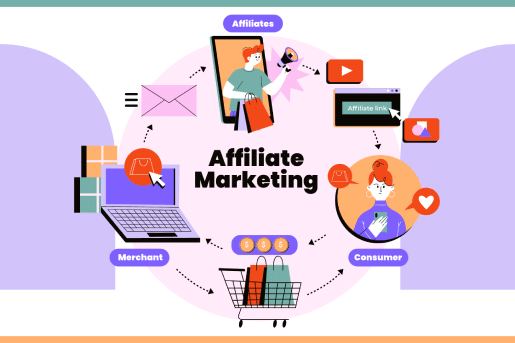
Affiliate marketing in the B2B arena can involve partnerships with industry influencers, publications, or complementary businesses that can promote your product in exchange for a commission for each sale made through their unique affiliate link.
Since B2B products and contracts often have a higher value than B2C, the potential return from affiliate marketing can be quite substantial.
22. Local SEO
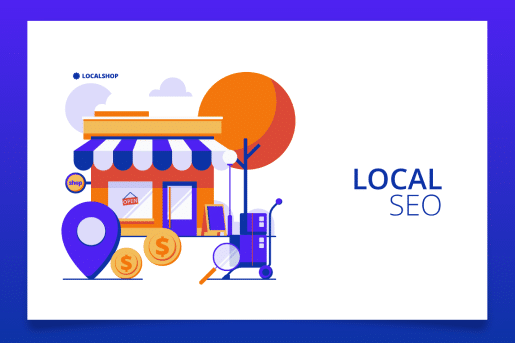
Even for businesses that operate globally, local SEO can be valuable. Targeting specific locations with localized content and keywords can attract businesses looking for local suppliers or services.
In this regard, Google My Business is an essential tool, enabling you to appear in local searches and provide immediate information like location, hours, and reviews.
23. Chatbots and AI

Chatbots and AI-driven tools can provide instant, round-the-clock customer service on your website, solving problems or directing potential clients to appropriate resources. For complex B2B queries, chatbots can escalate the issue to human agents.
They can also collect valuable customer data and conduct surveys to improve your services further.
24. SlideShare and Document Sharing
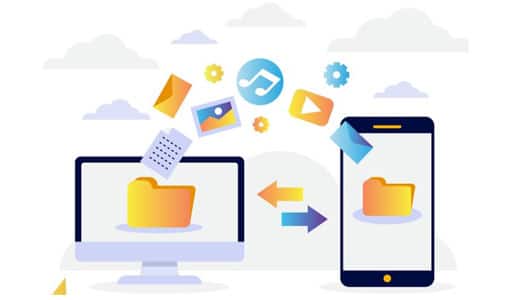
Platforms like SlideShare offer a unique way to share your content. You can upload presentations, PDFs, and other documents that potential clients might find valuable.
This form of content is easily shareable and can be embedded in blog posts or distributed via social media. It’s another avenue to display your industry knowledge and attract quality leads.
25. Voice Search and Smart Speakers
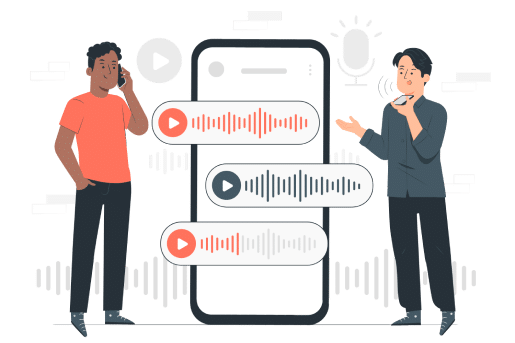
As voice search becomes increasingly prevalent, optimizing your content for voice can provide an edge. This involves a shift towards conversational keywords and local SEO, as people use natural language and ask questions when using voice search.
Moreover, creating skills or applications for smart speakers can place your brand in offices and boardrooms, accessed merely by asking a voice assistant.
Incorporating these diverse channels into your B2B e-commerce marketing strategy creates a more resilient and adaptable approach. Each channel has success metrics, so constant monitoring and adjustment are critical. But the ultimate aim remains
Conclusion
Navigating the complex landscape of B2B eCommerce sales is no small feat. Content may be king, but its reign is amplified with the right distribution channels.
This comprehensive guide has walked you through 25 powerful avenues—from the evergreen effectiveness of email marketing to the emerging trends in AI and voice search—to get high-quality content in front of the right eyes.
Your strategy must be as multifaceted as the channels available to you; aiming not only for short-term conversions but also for building lasting relationships. Remember, each channel comes with its own analytics and metrics, requiring constant monitoring and tweaking to ensure optimal results.
But above all, the key to successful Content distribution channels lies in delivering consistent value, establishing credibility, and solving your customer’s problems.
By leveraging these diverse distribution channels intelligently, you’re disseminating information and building a robust, scalable, and dynamic ecosystem where content thrives and drives your B2B e-commerce sales to new heights.
FAQs
Why are Content distribution channels essential for B2B eCommerce?
Content distribution channels is key for establishing thought leadership, supporting SEO efforts, educating customers, and fostering long-term relationships in the B2B space. It’s not just about immediate sales; it’s about building trust and offering value to other businesses over time.
What are some effective channels for distributing content?
Video marketing, social media advertising, email marketing, and influencer marketing are powerful channels for distributing content. These platforms allow targeted reach and high engagement and offer metrics to understand your content’s impact, aiding future strategies and enabling data-driven decision-making.
How can I measure the success of my Content distribution channels efforts?
Success metrics vary depending on the channel and your objectives. Common KPIs include website traffic, engagement, conversion, and ROI. Monitoring these metrics helps refine your strategy for greater effectiveness over time, ensuring you hit your key business goals.
Is SEO only about driving traffic to my website?
No, SEO serves as a dual-purpose tool. It drives organic traffic and acts as an ongoing content distribution channel. Well-optimized, high-quality content can continue to attract targeted audiences for an extended period, leading to sustainable growth and higher customer retention rates.







